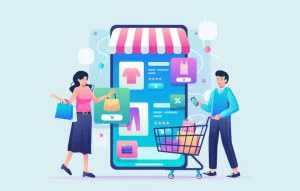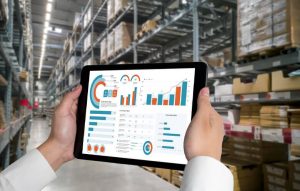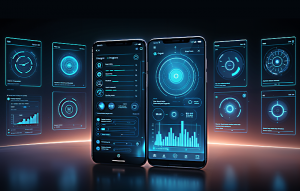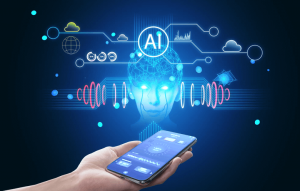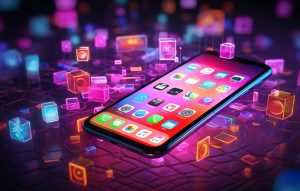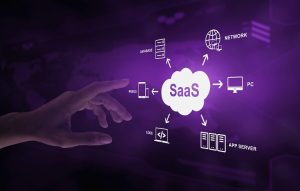Hello everyone!
And a very good day to all of you!
I am Parth Bhatt, Business Development Executive at Softweb Solutions – An Avnet company.
Welcome to our podcast on ‘understanding enterprise mobility as the new norm for a successful business.’
We are well into 2021 and most enterprises have already adopted some form of a mobile strategy in their organization, especially since the outbreak last year. However, as technology keeps evolving it is necessary for businesses to plan ahead so that they can deal with uncertainties and make them most of newer opportunities.
There are a lot of factors of mobility that go into deciding, such as devices to choose, understanding the trending and emerging wearables to accompany your mobile strategy and knowing which mobile solutions to deploy.
Of course, new technologies will bring new opportunities, but also new threats. App and cloud security, GDPR, software overload and modern UI/UX standards are just some of the challenges that today’s modern enterprises have to deal with.
And so, having said this, today’s podcast is based on enterprise mobility to help you ensure that you are on the right path for your enterprise mobility strategy this year.
Recent trends in business mobility
Let’s begin by taking an understanding of the global mobile technology market.
A recent study from GSMA intelligence showcases that 49% of the global population today is connected – meaning they use the internet using their smartphone. I believe all of us are among the 49%. Also, by the year 2025 the worldwide consumer adoption of 5G is forecasted to rise to 1.8 billion. Now that’s a huge number!
This clearly indicates that smartphone adoption will tremendously increase by 2025. Certainly, we can expect that mobility is the future as user interaction will be at the peak. To support this argument, let’s look at some of the recent mobility trends.
Enterprises are moving towards digital transformation and they are adopting a ‘digital-first’ approach.
A finding from IDG that shows a clear picture of the ‘digital-first’ approach and how various industries are prioritizing it on top of their mind. It is impressive to know that about 89% of organizations have adopted, or have plans to adopt a ‘digital-first’ business strategy.
This leads us to our next mobility trend – cloud computing.
A Cisco study says that Cloud Traffic grew 3.7 times from 2015 to 2020 and the cloud accounted for 92% of traffic by the end of 2020, up from 82% in 2015.
By this statistic, I can say that cloud adoption is no more an option. This means we have seen 30% of the total growth in CAGR by 2020. In fact, it has become a necessity for enterprises as consumers are demanding for anytime, anywhere access to information. This gives them better accessibility, speed, reliability and scalability.
Now, another important trend that enterprises should know about is the arrival of 5G
The fifth generation of mobile technology is expected to not only revolutionize the mobile industry, but also bring massive transformation to our lives.
It is expected to provide increased speed of 1 Gbps for downloading and uploading over the mobile networks by reducing the latency and by offering stable network connections.
5G will bring us the power to transmit massive amounts of data super quickly, supporting many new inventions like robotic telemedicine, immersive VR, self-driving cars and more. All these developments and possibilities are leading smartphone industry giants like Apple, Samsung, Huawei, OnePlus and many others to prepare for 5G ready mobile devices.
According to Sprint, 5G will cover about 40% of networks globally by 2024. Which means we will see a high number of 5G devices, 5G mobile subscriptions and huge mobile data traffic. All of these will drive enterprise mobility solutions at a higher
rate. Furthermore, the anticipation of 5G will also boost mobility solutions in the internet of things (IoT).
So let’s know the role of mobility in the internet of things (IoT)
As every organization today desires a competitive edge, they want to rapidly leverage mobility solutions to boost productivity, lower costs, protect data and improve user experience.
Today’s informed mobile users want to gain more productivity no matter where they are with more speed and definitely more accuracy. Therefore, smartphones, wearables and IoT-powered sensors have become essentials to many businesses.
Most of the wearables include features of accessing mobile apps, a mobile operating system and WiFi/Bluetooth connectivity. Some even function as portable media players, with playback of digital audio and video files. And some with mobile cellular functionality like making calls. Some peripheral devices inside are digital cameras, thermometers, accelerometers, pedometers, heart rate monitors, compasses, GPS receivers, speakers, SD cards and more.
Some wearables even have the capability to communicate with other external devices such as sensors, wireless headsets, or a heads-up display. All these capabilities are amazing and can be fully utilized for enterprise mobility. These capabilities strongly prove that various enterprises will embrace IoT-based mobility with open arms.
So far we have been talking about mobility’s role in IoT, now let’s move on with the possibilities of mobility and data. Every business generates some kind of ‘data’ which needs to be utilized for better benefits and by now, businesses are aware that data is crucial. It is critical for enterprises to extract such data and use it to transform the way their business functions. It is time that enterprises should reshape their organizational strategies and leverage some facts for better decision-making.
With the help of artificial intelligence and advanced analytics your data can be transformed into actionable insights. So, how does it rejuvenate your business? Let’s find out.
We have identified four major benefits. Firstly, data can assure you with increased awareness about your products and services and hence it becomes easy to market your products which can significantly boost your sales. Secondly, it can help you minimize any false positive while preventing fraud. Thirdly, it provides detailed insights on customer interests, preferences and purchasing patterns, which helps you to improve customer retention. And lastly, using data, it is easy to manage expensive assets by avoiding any unexpected machine failures while gaining more productivity and customer satisfaction. All these benefits will help you create a customer-centric approach which is most essential for a modern enterprise today.
Now, let’s understand how enterprises actually act with data?
A modern enterprise needs to act with data faster and more effectively in order to identify new business opportunities in the market. Smart mobile analytics uses advanced algorithms that understand your data and tell you how it can be used for the benefit of your enterprise.
Interactive dashboards and reports showcase the insights in a visualized manner. These visual insights can help you with better decision-making for your enterprise by easily identifying new patterns.
Let me mention some of the benefits of leveraging data visualization tools like Power BI and Tableau. You get a 360° view of your business data on the fly with Power BI. You can view your personalized dashboards and reports anywhere, anytime you want. It allows you to seamlessly view shared reports in real-time on tablets or smartphones. And you can also share live dashboards and reports within teams to be on the same page.
These tools make data interaction easy. This brings us to artificial intelligence and how it enhances mobile solutions
One such way is to use Cognitive Services – which are built with artificial intelligence capabilities and integrated into mobile apps to make them smarter.
Let’s see a few of them –
1. Computer Vision API empowers your app with image-processing algorithms. For instance, you can ask “What is in the image?”.
2. Speech API converts your spoken audio into a text, allowing your mobile app to respond using text. For example, “Give me the address to the nearest local branch”.
3. Language API integrates NLP in your app to understand a speaker’s requests and act appropriately. For instance, “Play today’s news headlines”.
4. Knowledge API offers intelligent recommendations and semantic searches and provides your responses. For example – Show me the top publications in customer lifecycle trends.
5. Search API can be integrated with Bing or Google search APIs to your app. So for example – Search for the “best Linen shirt brand” it will narrate the search result and present it on a smartphone.
Today’s modern enterprises build AI-enabled applications by integrating these Cognitive Services to solve any industry-specific issues. These are some of the Cognitive Services used to build applications that help organizations in generating insights to reduce costs, improve efficiency, increase revenue and improve customer support.
For instance, with face recognition or detection, you can identify, find, analyze, organize and tag faces in photos based on attributes like age, emotion, gender, pose, facial hair and more. Similarly, all these other services will also add more intelligent functionalities to your mobile apps and make them smarter.
So, let’s talk about a few mobile-based solutions that businesses should adopt at the earliest to boost productivity.
SUBSCRIBE TO OUR PODCAST
The first solution is an augmented reality-based field service solution.
A mobile app can enable field service executives or sales personnel to access their vital customer and service information while they are out in the field. They can easily dispatch, schedule, capture and enter service requests in real-time. Hence, work orders will no longer go ‘missing’. This sort of a solution drastically shortens the time of the job completion-to-payment. And also, it will ensure jobs in the field are completed correctly and timely.
Another solution is an AI-enabled indoor navigation solution.
Navigation skill-set is growing in popularity as it is also facilitating seamless communication and better collaboration. Indoor navigation helps customers to maintain safe distance and find accurate locations of products or places inside a building using Wi-Fi, Bluetooth, magnetic fields or the information collected by sensors, which helps in improving customer satisfaction.
Indoor navigation is an ideal solution for public locations such as University campuses, Museums, Stadiums, Libraries, Airports and Service stations. Additionally, the indoor navigation solution is also in-demand for parking facilities. This solution can help people to find a free parking space in a faster way and also provide the location of the parked vehicle.
Now let’s look at mobility in healthcare.
The remote patient monitoring solution is a cross-platform application that utilizes wearables. This solution appears to be the need of the hour.
The application communicates using a smartwatch and enables the patient or caregiver to manage their emergency contacts and medicine alerts. Viewing important healthcare-related data points from a single place, patients can track the progress through recovery, view the medication schedule and physical activities. This solution can be integrated with existing systems for better patient care and experience.
I hope these solutions have helped you understand new trends in mobility.
To conclude
We have indeed come a far way in our mobility journey and undoubtedly mobility has a lot to offer to organizations while helping them remain competitive. I would
say this is the right time to adopt mobility solutions as we fight the pandemic together and as we step into the new normal.
Mobility is the need of the hour for many organizations as they prepare for business continuity and to address their current operational challenges. Also, I am sure most of us are excited to know what the future unfolds for enterprises as with mobility, the possibilities are endless!
With this, I bring you to the end of this podcast and thank you for your attention. I hope this podcast contributed to your better understanding of enterprise mobility. If you have any questions, you can drop us an email on info@softwebsolutions.com. and our experts would be more than happy to help. You can also follow us on our social media channels for the latest in technology and enterprise.
Once again, thank you and stay safe!



